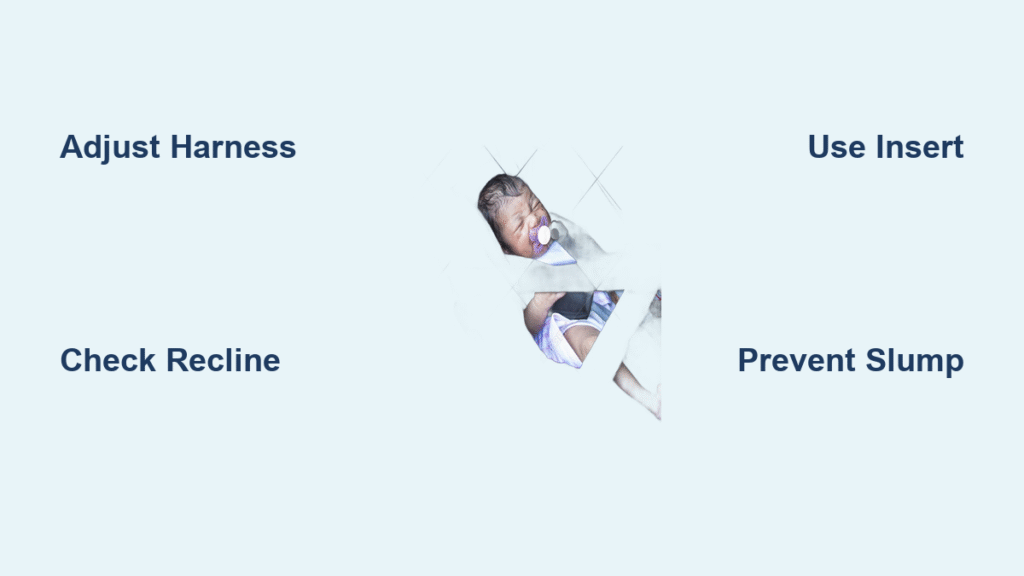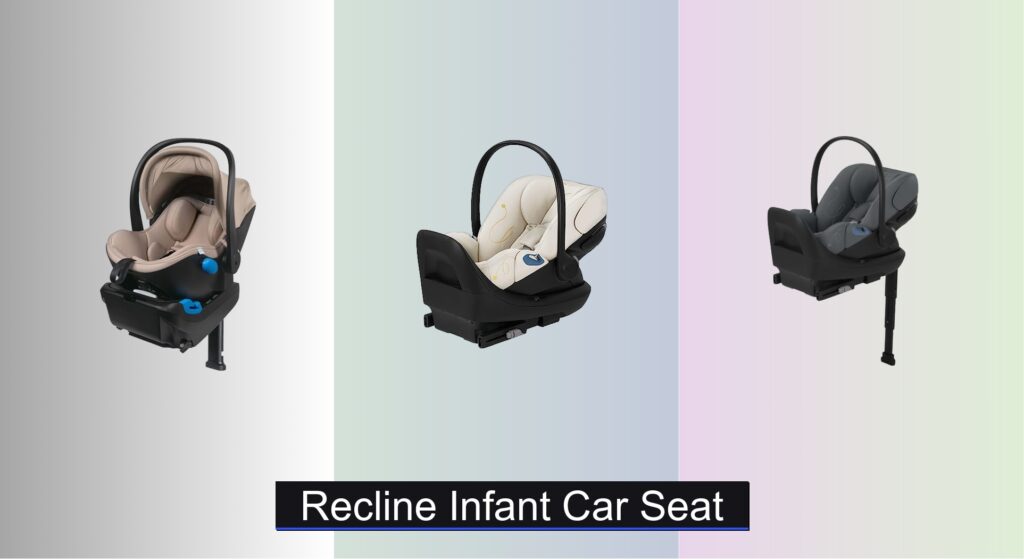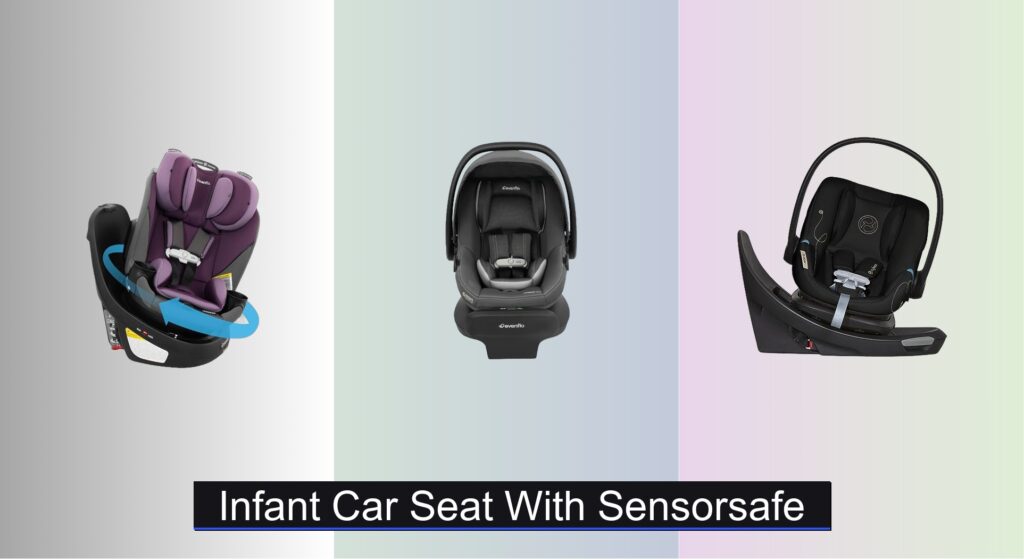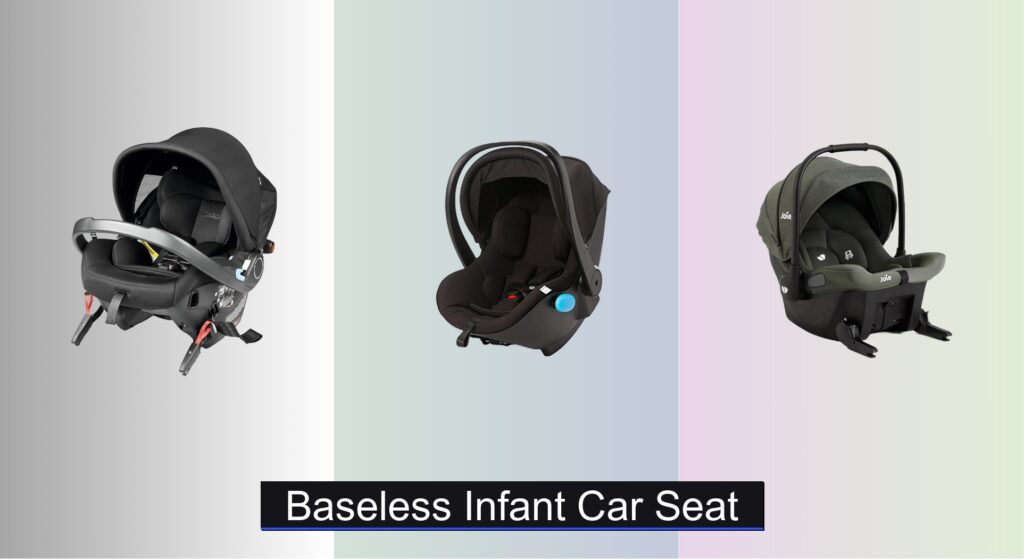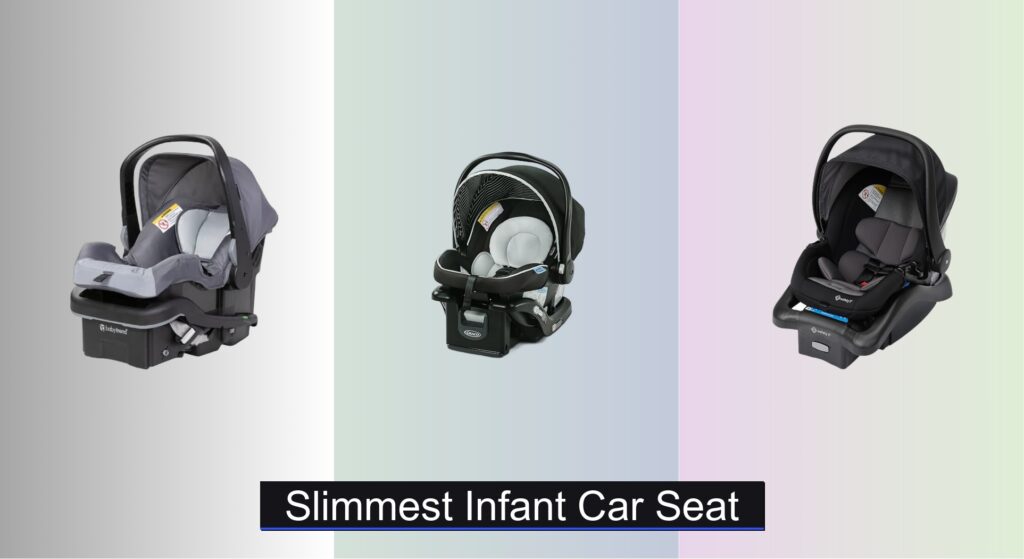As a new parent, there’s nothing more nerve-wracking than buckling your precious newborn into their car seat and noticing their tiny head slumping forward, chin tucked to chest. This “newborn chin to chest car seat” position isn’t just uncomfortable—it’s a serious safety red flag that can restrict breathing and increase injury risk during travel. The good news? A quick adjustment to the harness, insert, or recline angle often resolves it, giving you peace of mind on every drive.
In this comprehensive guide, we’ll go beyond basic tweaks to explore the root causes, step-by-step fixes, and long-term prevention strategies. By the end, you’ll have the tools to ensure your baby’s head stays in a neutral, safe position every time, backed by expert recommendations from the American Academy of Pediatrics (AAP) and certified car seat technicians. Let’s keep your little one secure and comfy on the road.
Understanding the Newborn Chin to Chest Car Seat Issue
The chin-to-chest position happens when a newborn’s head falls forward in the car seat, often due to their weak neck muscles and the natural physics of rear-facing seats. This isn’t just a minor annoyance; it can compress the airway, making breathing difficult and potentially leading to positional asphyxia—a condition highlighted in safety reports from the National Highway Traffic Safety Administration (NHTSA). For newborns under 4 months, this risk is especially high because their heads are proportionally larger and heavier compared to their bodies.
Spotting the problem early is key. Look for signs like the baby’s chin resting on or below their sternum, excessive forward slump even with the harness snug, or gurgling sounds indicating airway restriction. If you notice this consistently, stop driving and adjust immediately. According to the AAP, proper positioning keeps the baby’s head at least 1-2 inches above their chest, with the harness at or above the shoulders for rear-facing seats.
Common Causes of Newborn Chin to Chest in Car Seat
Several factors can trigger this unsafe position. Identifying the cause helps you target the right fix. Here’s a breakdown:
-
Improper Harness Adjustment: The most frequent culprit. If the shoulder straps are too low or loose, the baby’s head can flop forward. Newborns grow quickly, so what fit last week might sag now.
-
Incorrect Seat Recline Angle: Rear-facing infant seats must be at a 30-45 degree angle per NHTSA guidelines. Too upright, and gravity pulls the head down; too reclined, and it might not support the neck properly.
-
Lack of Infant Insert or Padding: Many seats come with removable inserts for newborns under 11 pounds, but if it’s missing or worn out, the baby’s body sinks too low, allowing the head to drop.
-
Overly Bulky Clothing or Blankets: Winter coats or thick blankets add bulk under the harness, creating slack that lets the head slump. The AAP advises against this for safety.
-
Seat Installation Errors: If the car seat isn’t level or securely anchored using LATCH or the seat belt, vibrations from driving can exacerbate slumping.
-
Baby’s Age and Size: Preemies or very young newborns (under 1 month) have limited head control, making them prone to this until around 4-6 months.
Addressing these causes promptly can prevent bigger issues, like needing to replace the seat if it’s damaged from misuse.
How to Fix Newborn Chin to Chest in Car Seat
Don’t panic—most fixes take just 5-10 minutes and require no special tools. Start with the simplest adjustments and test after each one by gently rocking the seat (with baby secured) to simulate driving. Always consult your car seat’s manual, as models vary (e.g., Graco SnugRide vs. Chicco KeyFit). If the problem persists, seek a free inspection from a certified Child Passenger Safety Technician (CPST) via Safe Kids Worldwide.
Method 1: Adjust the Harness for Proper Fit
This quick fix resolves 70% of chin-to-chest cases, per CPST training data.
-
Unbuckle and Reposition: Remove the baby safely. Loosen the harness completely by pulling the adjustment strap at the front or shoulder.
-
Set Shoulder Straps: For rear-facing newborns, the straps should come from slots at or just above the shoulders (never below). If your seat has multiple slots, raise them if needed—most infant seats like the Uppababy Mesa have adjustable rethread harnesses.
-
Snug It Up: Place baby in the seat, ensuring their bottom touches the seat bottom. Pull the harness snug: You shouldn’t pinch any slack at the collarbone, and the chest clip should be at armpit level. For newborns, add the infant insert if included to fill gaps.
-
Test the Position: Buckle in and check: The baby’s head should tilt back slightly, with at least 1 inch of clearance from chin to chest. Drive a short test loop if possible.
Time: 5 minutes. Pro tip: Mark the harness adjustment with tape for consistency.
Method 2: Optimize the Recline and Leveling

If harness tweaks don’t help, the seat angle might be off.
-
Check the Recline Indicator: Most seats have a built-in leveler on the side. Adjust the anti-rebound bar or foot (if applicable) to hit the 30-45 degree sweet spot. For example, the Peg Perego Primo Viaggio uses a simple bubble level.
-
Reinstall if Needed: If using LATCH, ensure connectors are fully clicked and the seat doesn’t move more than 1 inch side-to-side or front-back. For belt installation, thread the lap/shoulder belt correctly and lock it off.
-
Add Support if Allowed: Some seats permit a tightly rolled towel under the baby’s feet (not head) for extra stability, but check the manual—never under the head.
-
Verify with Baby: Reinsert the baby and observe. The head should stay neutral without wedging rolled blankets behind it, as this can be unsafe.
Time: 10 minutes. Warning: Never drive with an unlevel seat— it can cause injury in a crash.
Method 3: Use or Replace Infant Inserts and Padding

For very small babies, body support is crucial.
-
Install the Insert: If your seat (like the Evenflo Litemax) includes a newborn insert, place it in the seat base to cradle the body evenly. It should support from head to hips without bunching.
-
Check for Wear: If the insert is thin or missing, contact the manufacturer for a replacement—many offer them free. Avoid aftermarket pads unless certified.
-
Layer Thinly: For warmth without bulk, use a thin muslin blanket over the insert, but remove it before buckling if it adds slack.
-
Monitor Growth: Remove the insert once baby reaches 11-12 pounds or their head exceeds the support, typically around 2-3 months.
Time: 5-7 minutes. Important: Inserts must be harness-compatible; improper padding can loosen the straps in a collision.
Method 4: Advanced Check for Installation and Vehicle Fit
If basics fail, deeper issues may be at play.
-
Full Reinstall: Remove the seat and reinstall per the manual. Use the LATCH weight limit (usually 35-40 pounds total) or switch to belt if over.
-
Vehicle-Specific Adjustments: Some cars have seat belt tensioners or LATCH anchors that need tweaking. Test in different positions if you have a multi-row vehicle.
-
Professional Tune-Up: Visit a fire station or CPST for a hands-on check—they’ll spot subtle errors like twisted belts.
Time: 15-20 minutes, plus travel. If your seat is over 6 years old (check expiration date on the label), replace it immediately.
Prevention Tips for Newborn Car Seat Safety

Once fixed, keep the chin-to-chest issue at bay with these habits:
-
Daily Pre-Trip Checks: Before every drive, ensure the harness is snug, straps are straight, and the head position is neutral. It takes 30 seconds but saves stress.
-
Dress Appropriately: Opt for thin layers—add a coat after buckling. The rule: Baby should fit in the seat with just a light onesie or swaddle.
-
Schedule Growth Checks: Every 2-4 weeks, reassess fit as newborns gain 1-2 pounds weekly. Transition to harness-only (no insert) when ready.
-
Follow Recall Alerts: Sign up for NHTSA’s SaferCar.gov notifications. Issues like faulty harnesses have caused slumping in past recalls.
-
Educate Caregivers: Share this guide with family or babysitters. Everyone handling the baby should know the 1-inch rule.
-
Upgrade When Needed: Most infant seats max out at 30-35 pounds or 32 inches. Plan for a convertible seat around 9-12 months to maintain rear-facing longer.
Regular prevention extends your peace of mind and your seat’s lifespan, potentially avoiding costly replacements.
Pro Tips for Newborn Car Seat Mastery
Go beyond the basics with these expert insights from CPSTs and pediatricians:
-
Harness Pinch Test Variation: After snugging, try the “wiggle test”—gently tug the baby’s shoulders forward. No more than 1 inch of movement means it’s secure.
-
Avoid Common Mistakes: Don’t place blankets under the harness straps; it creates false slack. Also, never face forward before 2 years or 40 pounds, per AAP.
-
Optimize for Sleep: If baby nods off, a travel head support pillow (like the Skip Hop) can help if manual-approved, but monitor closely—sleep slumps are normal but shouldn’t be extreme.
-
Temperature Control: Keep the car 68-72°F to prevent overheating, which can make babies slump from discomfort.
-
Multi-Seat Strategy: If you have multiple vehicles, ensure identical seats for consistency. Rotate them monthly to check for wear.
-
Neck-Strengthening Aids: While not a fix, tummy time at home builds head control faster—aim for 3-5 minutes daily after the first month.
-
Tech Helpers: Apps like Car Seat Checker scan your model’s manual via QR code for quick reminders.
These tips can cut adjustment time in half and boost overall safety.
When to Seek Professional Help
Most chin-to-chest issues are DIY fixes, but call in experts if:
-
The problem recurs after multiple adjustments, suggesting a defective seat (contact the manufacturer for warranty repair—most cover 1-2 years).
-
You notice unusual symptoms like persistent gurgling or retractions (chest pulling in), which warrant a pediatrician visit to rule out reflux or other issues.
-
Installation feels off despite following the manual—CPSTs fix 80% of errors on-site.
Look for certified providers via the Safe Kids network (find locations at safekids.org). Expect $20-50 for inspections, often free at events. For warranties, keep receipts and register your seat online upon purchase. If buying used, avoid it—seats lose integrity after accidents.
FAQ
Q: Is the chin-to-chest position always dangerous for newborns?
A: Yes, it can restrict airways and increase crash injury risk, especially in rear-facing seats where the head is unsupported. The AAP recommends immediate correction to maintain a neutral head tilt, with the bottom of the ears aligned over the shoulders.
Q: How do I know if my newborn car seat insert is installed correctly?
A: The insert should fit flush without gaps, supporting the head, neck, and body evenly. Check your manual— for instance, the Britax B-Safe uses a specific velcro alignment. If the baby’s head still slumps, try without it for larger newborns.
Q: Can I use a towel to fix chin-to-chest slumping?
A: Only a small, rolled towel under the feet for recline support, and only if the manual allows (many do for temporary use). Never under the head or behind the back, as it can shift in a crash and cause spinal injury.
Q: What if my baby’s head slumps only after falling asleep?
A: Sleep naturally relaxes muscles, so recheck harness snugness. If persistent, the recline might need tweaking. Avoid driving long trips with newborns until head control improves (around 4 months); stop every 2 hours for checks.
Q: Are all infant car seats prone to this issue?
A: Most rear-facing models are, but look for ones with good newborn support like the Clek Liing (with rigid LATCH) or Nuna Pipa (adjustable base). Always read reviews on sites like BabyGearLab for head position feedback.
Q: How often should I replace my newborn car seat?
A: Every 6-10 years from manufacture date, or after any crash. Expiry ensures materials haven’t degraded, reducing risks like harness failure that could worsen slumping.
Q: Does car seat type matter for preemies?
A: Absolutely—preemies often need premature-specific inserts or car beds (flat carriers) for better positioning. Consult your NICU team; models like the Angel Guard Angel Ride are designed for this.
Alternative Solutions for Newborn Car Seat Positioning
If your current seat can’t be fixed (e.g., due to model limitations), consider these options. The main solution—adjustments—works for 90% of cases, but alternatives shine for specific needs.
| Solution | Pros | Cons | Best For |
|---|---|---|---|
| Newborn Car Bed (e.g., Snoo-like bassinet carriers) | Flat positioning prevents slumping entirely; great for preemies with breathing issues. | Bulkier, harder to install; not for long-term use (up to 20 pounds only). Higher cost ($200-400). | Hospitals or very young infants with medical needs; short trips. |
| Convertible Seat with Infant Booster (e.g., Diono Radian) | Grows with baby; adjustable recline for better head support. Compact for small cars. | Heavier (25+ pounds); steeper learning curve for install. | Families planning long-term rear-facing (up to 50 pounds); multi-child households. |
| Travel System Stroller Integration (e.g., Uppababy Vista) | Seamless car-to-stroller transfer; built-in inserts for newborns. | Expensive full system ($800+); stroller adds weight. | Urban parents needing convenience; frequent outings. |
| Aftermarket Head Supports (e.g., certified foam wedges) | Affordable add-on ($20-50); targeted neck support. | Must be crash-tested (look for FMVSS 213 certification); not for all seats. Potential warranty void. | Temporary fixes in compatible seats; budget-conscious users. |
Weigh these against your lifestyle—stick to NHTSA-approved options and get a CPST fitting.
Keep Your Newborn Safe and Secure in the Car Seat
With this guide, you’ve got everything to banish the newborn chin to chest car seat worry for good:
– Quick harness and recline adjustments for immediate relief
– In-depth causes and prevention to avoid recurrence
– Pro tips and alternatives for tailored safety
Following these steps not only complies with AAP and NHTSA standards but also lets you focus on the joy of parenthood without constant checks. Your baby’s safety is in your hands—start with a full inspection today, and enjoy worry-free drives.
Have you fixed a chin-to-chest issue in your newborn’s car seat? Share your tips or experiences in the comments to support other parents! If problems persist, describe your setup for community advice.

